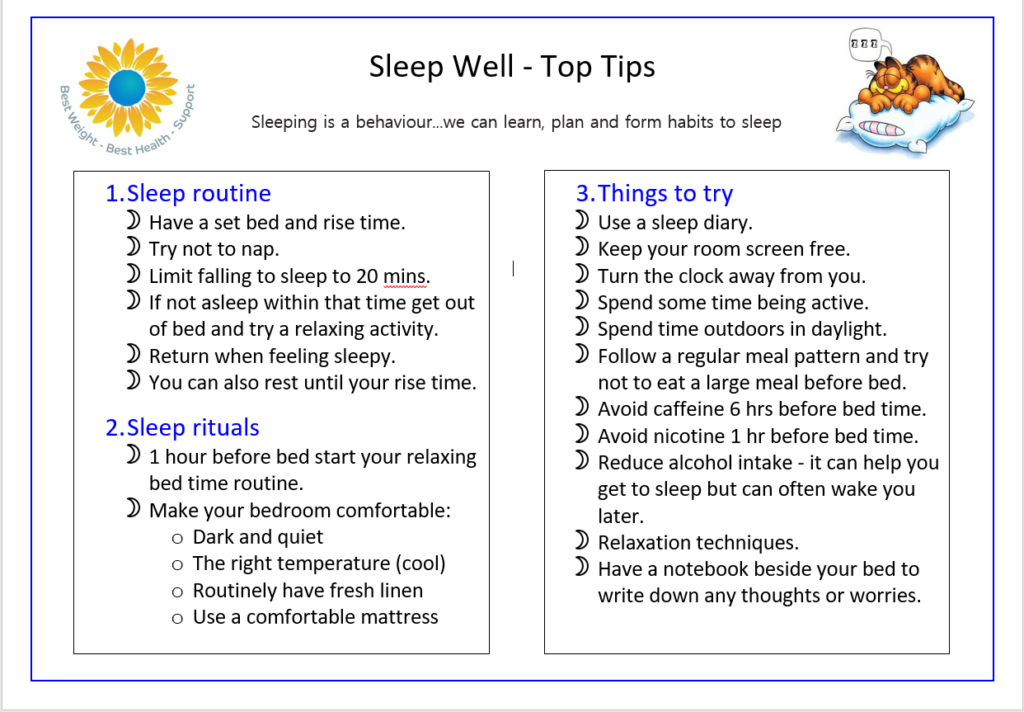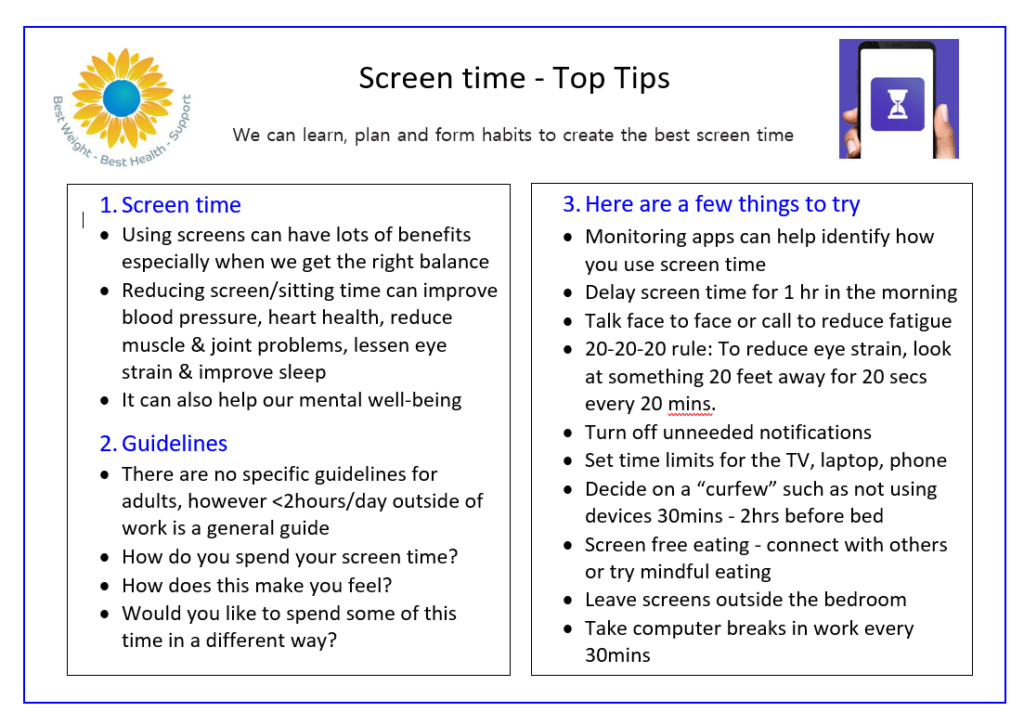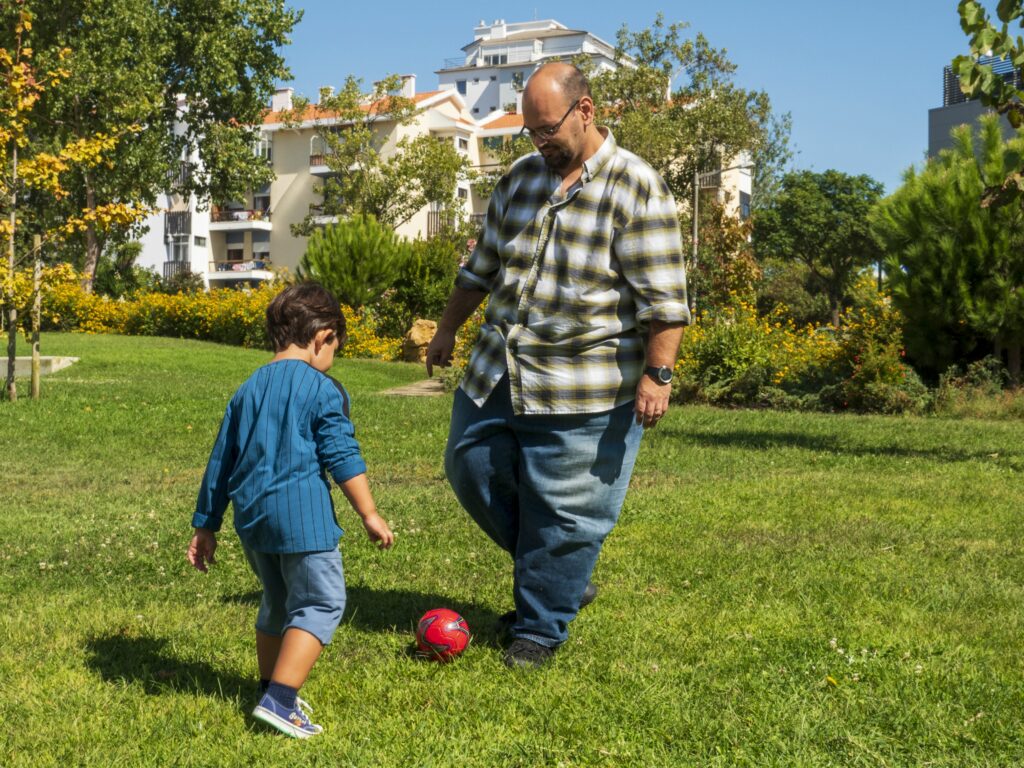Physiotherapy resources
Physiotherapy can help you to:
- Restore normal function and mobility
- Source mobility aids
- Understand and manage pain
- Address sleep challenges
- Manage leg swelling
Please find some helpful information below or use the menu to the side to jump to the relevant section.
Sleep tips

You can download a sleep diary here: Sleep Hygiene Diary
Screen Time
To establish and maintain a healthy lifestyle it can be useful to monitor our screen time. Please find below some useful information about screen time.

Lower Limb Swelling
Lower Limb Swelling
1 in 3 people attending our service have lower limb swelling. This swelling can cause pain, make moving harder & lead to skin infections like cellulitis. This swelling is often called Lymphoedema.
1 in 10 people have signs of Lipodema. This is an increased build-up of fat cells in the legs, hips & bottom.
Management:
Moisturise the skin on your legs every day. Any moisturiser you have will do, e.g. E45 cream.
Compression can be really helpful. Your physiotherapist will help you to find which compression type will work best for you.
For further information on things we can do to help please see our leaflets Swollen Legs and Compression therapy
When you attend the clinic we can talk more about how best to manage these conditions.
Physical Activity
Physical Activity
Physical activity is about building movement into our day. Focusing on movement that is comfortable and enjoyable. It can be indoors/outdoors, alone/with a friend/group, online or face to face. Here are a mix of seated and standing exercises that can help build fitness & strength: Physical activity download
You can set a time or number to do and pick what suits you best.

Pelvic Floor Health
Urinary incontinence is the involuntary leakage of urine.
Prevalence
- It affects 1 in 3 women and 1 in 10 men at some point.
- More common in older adults, but not a normal part of aging.
- Women are more likely to experience it due to pregnancy, childbirth, and menopause.
- There are several types of urinary incontinence with different causes:
- Stress Incontinence: Leakage with increased abdominal pressure e.g. during coughing, sneezing, lifting. Common after childbirth or pelvic surgery.
- Urge Incontinence (Overactive Bladder): Sudden, intense urge to urinate followed by involuntary leakage, bladder muscle overactivity.
- Overflow Incontinence: Bladder doesn’t empty properly, leading to dribbling, nerve damage or enlarged prostate.
- Functional Incontinence: Physical or cognitive impairments prevent timely bathroom access.
- Mixed Incontinence: Combination of stress and urge incontinence.
Management
Treatment depends on the type and severity of incontinence:
Conservative Approaches:
- Pelvic floor exercises (Kegels) For tips click here
- Bladder training – For a bladder & bowel diary please click here
- Lifestyle changes (e.g., weight management, fluid management, avoiding bladder irritants)
